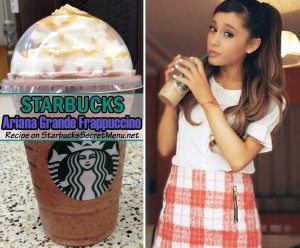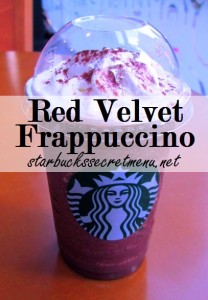A couple of nights ago I was scrolling down the home page of BuzzFeed and noticed a post in the bottom left side of my screen entitled “The Ariana Grande Frappuccino.” Millions of different thoughts rushed through my mind that varied from believing that this drink was a spoof to believing that this was another fake post created by a teen to get attention. After several thoughts and a couple of Snapchats sent I decided to run to Starbucks and order an Ariana Grande Frappuccino.
To order an Ariana Grande Frappuccino first you will need to order my personal favorite Starbucks Secret Menu Beverage the “Cotton Candy Frappuccino”, which consists of ordering a Vanilla Bean Frappuccino and adding two pumps of Raspberry Syrup. Afterwards you will need to ask for an extra pump of Mocha Syrup, some Mocha Chips, whipped cream and some drizzled caramel on the top. Please note that this is the order for a “standard” (Grande) Ariana Grande Frappuccino, if you wished to order a larger size you would need to ask for one and a half extra pump of every ingredient per incensement in cup size. As you guys might assume, I don’t want to know what the sugar content or calorie content this beverage contains.
My first impression of The Ariana Grade Frappuccino recipe was not as positive since it consisted in lots, perhaps too many, additional syrups and sugars that made me hesitate. After all, who would want to pay extra money for an item that they won’t like? However, that afternoon I felt adventurous and decided to try it. As expected, the beverage was pretty much drenched in sugars and syrups. The taste, nevertheless, was pretty delicious. The beverage resembles a diet or smoother cookies and crème milkshake texture. I think that the addition of the mocha chips in the beverage causes this since it gives the beverage that sweet “crunch” you find in tiny chocolate chip based foods, like in the Cookie Crip Cereal, or the Bitter Sweet Mint ice cream from The Creamery. I also believe that the Ariana Grande Frappuccino has a very peculiar taste, perhaps almost an acquired taste, since it has layers of different flavors. In fact, the way each ingredient fades in your mouth into the next, leading almost a harmonic burst of flavor reminds me of the way the trident layer gum melts in your mouth from flavor to flavor. Regardless of what I first thought about The Ariana Grande Frappuccino, after I tried it I must admit the beverage is pretty tasty. As BuzzFeed stated in their article The Ariana Grande Frappuccino is a “Disco Techno circus party in my mouth (Brantz, 2015).”
I guess the pop singer was right, now she has one less problem. She no longer has to worry about getting her name messed up at Starbucks.
Work Cited:
Brantz, Loryn. “This Is What Happens When You Order An ‘Ariana Grande’ From Starbucks. BuzzFeed. N.p. 23 Feb. 2015. Web. 24. Feb. 2015.
Starbucks Secret Menu. “Starbucks Ariana Grande Frappuccino.: Starbucks Secret Menu. N.p., n.d. Web. 26 Feb 2015.



